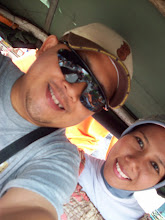by. John Dow
It really doesn’t matter what type of website you may be creating, there are certain common elements that should always be incorporated. And if you plan on adding Adsense, Google’s program for webmasters to display the same ads as on search engine results, it can be even more important. Any Adsense ready website should have a layout and design that allows for the display of Google ads.
There are two main areas in website design. The look and feel that is visual and the backend that involves ongoing activities like updating, collecting user input, and RSS feeds if applicable just to name a few. In this article we’ll take a look at the backend planning and operations.
In a perfect plan, you would design a website and layout that can provide easy navigation, lots of valuable content on the subject matter, and one that can be easily maintained. Most of the maintenance would be more in the updating and adding content on a regular basis. The content should be organized by sub categories so that any visitor can drill down into specific areas within the subject matter.
As an example, if you were designing a website on raising fish as a hobby, you could sub categories on freshwater, saltwater, equipment, and etc. In each section, the Adsense ads displayed would be specific to each category that the user was viewing. The trick is to make sure the placement can correlate to the subject, since Google reviews the content to insure accurate placement, you need to make sure that the information is visible to the Google software bots (bots are software programs that identify subject matter).
You wouldn’t want to use frames in your design since that may it more difficult for Google to determine the right subject. Actually, frames were never a good idea as far as search engine rankings due to the method of determining content, although they are a quick shortcut for the website designer. Tables would be a better choice but even with tables you should show some restraint.
A good portion of your time will be spent on adding content to your website once it is up and running. There are several good ways to help you automate the process depending on your server OS and website editor. When you first start planning and developing your website, you should include an updating methodology.
The two most popular server Operating systems are Unix/Linux or Windows. The most common automated methods used on Unix/Linux servers are:
SSI – Server side includes which is used with Apache Server software (also can run on Windows servers)
PHP – A scripting language used to display dynamic content (also can run on Windows servers)
Perl – Another scripting language used to display dynamic content (also can run on Windows servers)
On a Windows Operating System you can run the above but many chose to run scripting languages that are inherent to Windows such as:
ASP – Active Server Pages is Microsoft’s dynamic content language
.NET – A more robust version of ASP that uses the .NET Framework
There are many more script languages but the ones above are the most popular and are all good choices. In ease of use, SSI wins hands down. The more sophisticated needs will require one of the scripting languages. But the learning curve is considerable and depending on the size and scope of the website, may not be necessary.
There are also many popular Web Content Management systems that may be used when the number of pages, contributors or authors, and subject matter out grow the abilities of a more simple solution. These high-end programs can let users add content on the fly and do many automated tasks besides updating content.
No matter what you chose to help you automate your updating methods, you should have some method incorporated into your website design. Manually updating any website will be laborious and time consuming. And once you get beyond a few pages, almost impossible to track and maintain.
Another good way to provide content that is always fresh is RSS feeds. Rich Site Summary is a format for adding news items from other websites like Yahoo News or any newsy website. RSS feeds from websites can be setup using software feed readers or news aggregate software. It can be as simple as a Java routine that goes to your website of choice and pulls in the latest articles or news items. Or you can expand the service to include many websites that have content that matches your website with very sophisticated buy off the shelf software packages.
Once again it’s not so important on which method you use as to make it easy to setup and that it provides high value content to your website visitors. Depending on the subject matter, they may or not be a lot of daily information available. But RSS feeds can help you provide constant new content on any specific subject.
So if you want to design an Adsense ready website, stick to basic good website backend procedures. Navigation needs to be simple and content easy to find. Content needs to be updated frequently and very relevant to subject matter. Use as many easy and efficient auto updating methods as you can. And last, but not least, organize your subject matter in sub categories and create a natural flow of information.
Article Source: www.esitesecrets.com/articles/586/1/Adsense-Ready-Websites/Page1.html


No comments:
Post a Comment